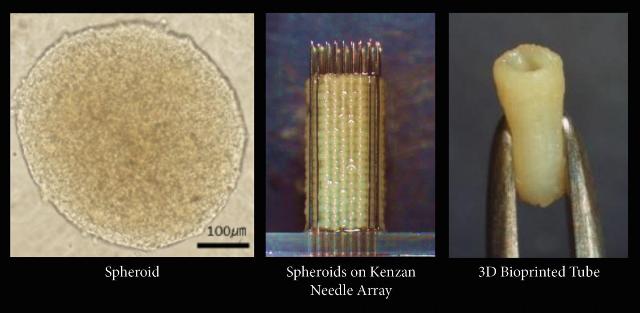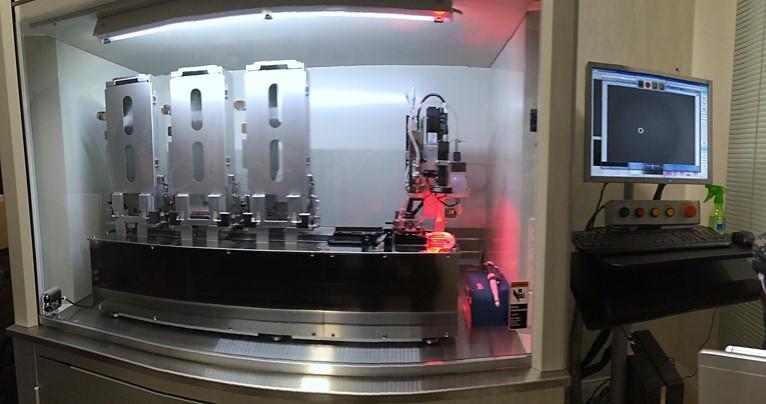Cyfuse Biomedical Partners with Cell Applications Inc. for the First Use of Regenova 3D Bioprinter Outside Japan
 When it comes to 3D bioprinting, there are a few companies who tend to dominate the news, while others labor more quietly in the background. Back in August, we wrote a feature on some of those lesser-known but significant companies in the bioprinting industry. One of those companies was Cyfuse Biomedical, a Japanese corporation that has developed a novel form of bioprinting known as the Kenzan method.
When it comes to 3D bioprinting, there are a few companies who tend to dominate the news, while others labor more quietly in the background. Back in August, we wrote a feature on some of those lesser-known but significant companies in the bioprinting industry. One of those companies was Cyfuse Biomedical, a Japanese corporation that has developed a novel form of bioprinting known as the Kenzan method.
Most existing bioprinting techniques depend on scaffolding, which is solution made from biomaterials such as collagen or hydrogel. The solution is required to hold together the seed cells that will be grown into tissues or organs. With the Kenzan method, no scaffolding is needed. “Kenzan” is Japanese for “needle array,” and an array of needles form the basis of the process. Cyfuse’s Regenova bioprinter works by gathering cell aggregates, or spheroids, onto a series of needles in a pattern predetermined by 3D software. The needles are so close together that the cells they hold will fuse together into solid, firm tissue when placed in a bioreactor.
Cyfuse began marketing the Regenova printer not long ago, and now a new partnership with San Diego-based Cell Applications, Inc. will make tissue produced by the Kenzan method available to North American researchers – the first time the Regenova printer will be used outside of Japan.
“The Regenova 3D Bio Printer, combined with Cell Applications’ comprehensive, high-quality primary cell bank, offers researchers streamlined access to a nearly limitless selection of three dimensional tissues including those mimicking blood vessels, human neural tissue and liver constructs,” said Koji Kuchiishi, CEO of Cyfuse Biomedical. “The collective strengths of both our companies will serve the growing demand for viable engineered tissues and accelerate scientific discovery in North America, taking us one step closer to making regenerative medicine a reality.”
 Cell Applications will utilize the Regenova printer to produce tissue for researchers on a pay-for-service basis. The company already offers over 100 types of animal and human primary cells in about 900 configurations, and their custom services program isolates certain types of primary cells upon request. With the Kenzan method, more delicate primary cells can be preserved than in other bioprinting methods, in which cells are frequently damaged. The Kenzan method yields a higher amount of viable cells that maintain the critical properties of their original tissue systems, without any kind of chemical or genetic modification.
Cell Applications will utilize the Regenova printer to produce tissue for researchers on a pay-for-service basis. The company already offers over 100 types of animal and human primary cells in about 900 configurations, and their custom services program isolates certain types of primary cells upon request. With the Kenzan method, more delicate primary cells can be preserved than in other bioprinting methods, in which cells are frequently damaged. The Kenzan method yields a higher amount of viable cells that maintain the critical properties of their original tissue systems, without any kind of chemical or genetic modification.
“In addition to customized cell isolation and assay services, Cell Applications is now able to provide researchers with an integrated cell-engineering solution that utilizes our expansive primary cell bank and the innovative Kenzan bioprinting method,” said James Yu, founder and CEO of Cell Applications. “Having the Regenova 3D Bio Printer at our San Diego headquarters with our vast array of primary cells is a powerful combination. We’re very pleased to offer researchers an end-to-end, customized solution for creating scaffold-free, 3D-engineered tissues that reduce costs by minimizing the lengthy processes typical in pharmaceutical drug discovery.”
So far, academic research institutions have been using the Kenzan method to print nerves, blood vessels, and liver-like tissue. The potential future applications of the technique are numerous – pancreatic islets, cardiac muscles, and production of skin, spinal cord, and other types of tissues for drug screening. And, like all other bioprinting organizations, Cyfuse hopes that their technology will eventually lead to the printing and regeneration of entire, functional human organs. Discuss this latest news in the Cyfuse 3D Bioprinter forum over at 3DPB.com.
Subscribe to Our Email Newsletter
Stay up-to-date on all the latest news from the 3D printing industry and receive information and offers from third party vendors.
You May Also Like
Precision at the Microscale: UK Researchers Advance Medical Devices with BMF’s 3D Printing Tech
University of Nottingham researchers are using Boston Micro Fabrication‘s (BMF) 3D printing technology to develop medical devices that improve compatibility with human tissue. Funded by a UK grant, this project...
3D Printing Webinar and Event Roundup: April 21, 2024
It’s another busy week of webinars and events, starting with Hannover Messe in Germany and continuing with Metalcasting Congress, Chinaplas, TechBlick’s Innovation Festival, and more. Stratasys continues its advanced training...
3D Printing Webinar and Event Roundup: March 17, 2024
It’s another busy week of webinars and events, including SALMED 2024 and AM Forum in Berlin. Stratasys continues its in-person training and is offering two webinars, ASTM is holding a...
3D Printed Micro Antenna is 15% Smaller and 6X Lighter
Horizon Microtechnologies has achieved success in creating a high-frequency D-Band horn antenna through micro 3D printing. However, this achievement did not rely solely on 3D printing; it involved a combination...































